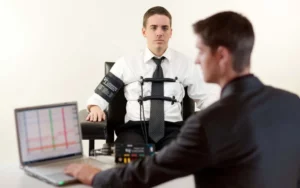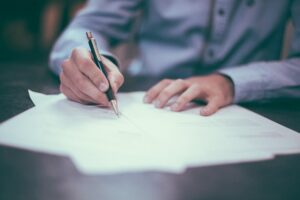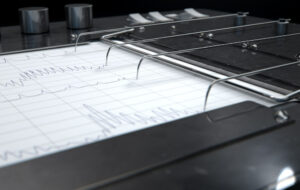So you have an upcoming polygraph test and want to know if the results will accurately reflect the truth. While polygraphs can be very helpful tools, their reliability and accuracy depend on many factors. Here is what you need to know about testing and how to evaluate the accuracy of your results:
Understand how polygraph tests work

Polygraph machines measure and record several physiological responses, including blood pressure, pulse, respiration, and skin conductivity while a person is asked a series of questions. The assumption behind polygraph testing is that telling lies causes measurable physiological changes that can be detected and recorded by the machine.
Here are some important things to understand about the inner workings and limitations of polygraph tests:
- They measure arousal, which could be caused by anxiety, anger, surprise etc – not just lying. An innocent person may show signs of anxiety or stress during questioning.
- There is no one single “lie response”. Different people may show different physiological responses when lying or stressed.
- The examiner’s questioning technique and interpretation of the test results can significantly impact accuracy.
- Certain medical conditions, mental health issues, use of medications, or even fatigue could affect a person’s physiological responses and thus the test results.
Consider the validity of the test format
There are different formats of polygraph testing, some more valid than others. The most common formats include:
- Comparison Question Test (CQT): The most widely used approach. Intermixes relevant questions (“Did you steal money from work?”) along with comparison questions designed to produce anxiety (“Have you ever taken something that didn’t belong to you?”). The assumption is that innocent people will react more strongly to the comparison questions. This is considered one of the more valid and accurate formats.
- Concealed Information Test (CIT): Also called the Guilty Knowledge Test. Involves asking questions where the interviewee is expected to have knowledge that only the perpetrator would know (“Was the stolen money hidden under the mattress?”).
- Directed Lie Test: The examiner asks questions while the interviewee simply answers Yes or No. This method is prone to error and not considered scientifically valid.
Pay attention to the type of questions asked and the overall format. Tests relying on comparison questions and directed lying are more likely to produce ambiguous or inaccurate results.
Ensure proper procedures are followed

In order for the results to hold weight, proper procedures must be strictly followed:
- The examiner should thoroughly explain the testing process and gain your consent before proceeding. You should not feel coerced or intimidated.
- The pre-test interview should give you a chance to share information relevant to the issue being investigated. Fully disclose any medical conditions or medications.
- All questions should be straightforward and clear. Avoid tests that use confusing wording or vague questions.
- The examiner should remain neutral and unbiased throughout the entire process. Look for any signs of prejudgment.
- Sufficient time should be provided between the pre-test, actual test, and post-test review. Rushing through the stages can affect accuracy.
Many mistakes happen when examiners fail to comply with proper protocols and safeguards. Be wary if any steps seem hasty or are skipped entirely.
Evaluate the examiner’s qualifications
The skill level, training and professionalism of the tester have a huge influence on the reliability. Here’s what to look for:
- Relevant background and training: Find out what education, certification, training and experience the examiner has specifically in polygraph testing. They should have extensive, up-to-date training.
- Testing volume and experience: Examiners who rarely conduct tests may have inadequate skills. Look for someone performing at least 200 tests per year to be proficient.
- Professional affiliations: Credible examiners belong to professional associations that uphold norms and ethics, like the American Polygraph Association. Verify any claimed affiliations.
- Licensing: Some states require polygraph examiners hold a current and valid license. If yours does, confirm the license is legit.
A less qualified or unscrupulous examiner is more apt to make mistakes influencing the test results. Verify you’re dealing with a consummate professional.
Review the wording used in test questions

The way questions are worded and asked is critical. Here are signs of problematic wording:
- Leading or suggestive questions: Questions shouldn’t imply certain answers or nudge you in a certain direction. Watch for suggestive wording.
- Compound or confusing questions: Stick to simple, straightforward questions. Compound or confusing questions increase ambiguity.
- Overly broad questions: Questions should be specific to the issue at hand vs. overly general. Target details directly.
Before the test, review the planned questions to spot any faulty wording. Reframe questions that seem unclear, compound or presumptive. Precision is a must.
Look critically at how your physiology data is interpreted
The examiner’s analysis and interpretation of the physiological data recorded during the test contains several opportunities for error or bias:
- Over-reliance on polygraph results: Data should not be used as a single determiner of truth. Your statements and other evidence must also be considered.
- Discarding inconclusive results: Just because results are inconclusive does not necessarily mean you are deceptive. Don’t let ambiguities automatically count against you.
- Observer bias: An examiner’s preconceived notions or motives may slant their interpretations. This could lead to either false positives or false negatives.
- Failure to account for context: Nervous behaviors could be due to external circumstances vs. deception. Your situation must factor into data analysis.
Insist that examiners corroborate test results against your statement, explanations and any corroborating materials. Don’t let your results be viewed in isolation.
Request an evidentiary hearing for unfavorable results

If your results suggest deception or are inconclusive, this does not automatically confirm you lied or are guilty. You have the right to challenge any unfavorable outcomes:
- Provide alternative explanations for physiologic responses. Anxiety, medical issues or the testing conditions may have influenced the data.
- Point out any issues with the examiner’s methods, questions or analysis of the results.
- Request a re-test with a different examiner. See if results are consistently replicated.
- Submit witness statements or records to verify your honesty and dispute unfavorable conclusions.
- Consult a lawyer if the polygraph is being used as evidence against you in a criminal case or employment hearing.
Unfavorable results alone should not be treated as definitive proof you lied. You have the opportunity to present counter evidence and alternative explanations.
Consider the motives behind the polygraph test
Recognize that the motives of the person or entity requesting the polygraph test can influence the administration, conduct and interpretation of the results. Possible motives include:
- Eliciting a confession by intimating the machine is 100% accurate at detecting lies
- Justifying a predetermined course of action, like denying an applicant a job
- Intimidating the person being tested into making statements they believe the tester wants to hear
- Providing legal cover in case the polygraph results are later challenged
An improper motive can introduce biases impacting everything from question phrasing to data analysis. Understanding the incentives behind the polygraph can reveal potential blind spots.
Request polygraph techniques that optimize accuracy

The American Polygraph Association outlines best practices examiners should follow to maximize the accuracy of results. Be sure the examiner conforms to these:
- As mentioned, ask to use the comparison question technique (CQT), widely considered the most valid approach.
- Ask only one relevant question per series. This avoids confusion and cross-contamination of responses.
- Include at least three repetitions of each relevant question. This establishes consistency.
- Conduct at least two full series, at a minimum. Comparing multiple series improves statistical confidence.
- Separate relevant questions with neutral/ irrelevant questions to create distinct responses.
- Employ numerical scoring vs subjective interpretations to analyze responses. Numerical scores are less prone to bias.
Ask for access to written records and physical data
To enable independent verification of your results, request access to:
- The examiner’s written report detailing the methods, questions asked, answers given, measurements recorded, data analysis and final conclusions.
- The actual polygraph charts recorded during the exam. Have another certified examiner review the charts for any irregularities.
- Audio/video recordings of the pre-interview, test procedure and post-test discussion. Look for proper protocols.
- The examiner’s credentials, training certificates, licenses and proof of professional affiliations.
- Documentation of equipment inspections and calibration checks. Outdated or faulty equipment affects results.
Carefully inspect these records for any issues indicating flawed, biased or negligent practices that could compromise the integrity of your polygraph exam results.
Be aware of countermeasures

Test takers should avoid these as they will skew results:
- Physical countermeasures: Deliberately altering physiology through pain, drugs, muscle tensing etc.
- Mental countermeasures: Using mind tricks, visualization, hypnosis or other techniques to control reactions.
- Disguising reactions: Overacting shocked responses or minimizing reactions with breathing control, muscle tensing etc.
- Providing distorted or inflated answers during pre-test interview.
Even minor attempts by innocent parties to influence results using these techniques can backfire and cast doubt on outcomes. Answer honestly and conduct yourself naturally.
Consider alternatives
While commonly used, polygraphs are not the only method for assessing truthfulness and detecting deception:
- Statement analysis: Experts objectively analyze word choice, language, and details in a written or verbal statement to identify signs of deception.
- Forensic linguistics: Compares vocabulary patterns, syntax, and other language traits in statements to linguistic profiles of truth tellers vs liars.
- Voice stress analysis: Measures micro-tremors in the voice which may indicate stress levels. Less intrusive than polygraph testing.
- Facial analysis technology: Subtle facial expressions and microexpressions can signal deception. Analysts use software to help interpret these clues.
- FMRI brain scans: Blood oxygenation patterns in the brain may differ when lying vs telling the truth. Still an emerging technique.
Discuss alternatives with the polygraph tester to determine if another technology or analysis may be warranted, either in conjunction with or instead of polygraph testing.
By being an engaged participant, reviewing all aspects of your polygraph exam, and taking advantage of your rights, you can better assess the validity of your results. While not infallible, polygraphs can offer additional insight when administered fairly and accurately. Insist that those standards be met so you can have greater trust in your outcomes.

